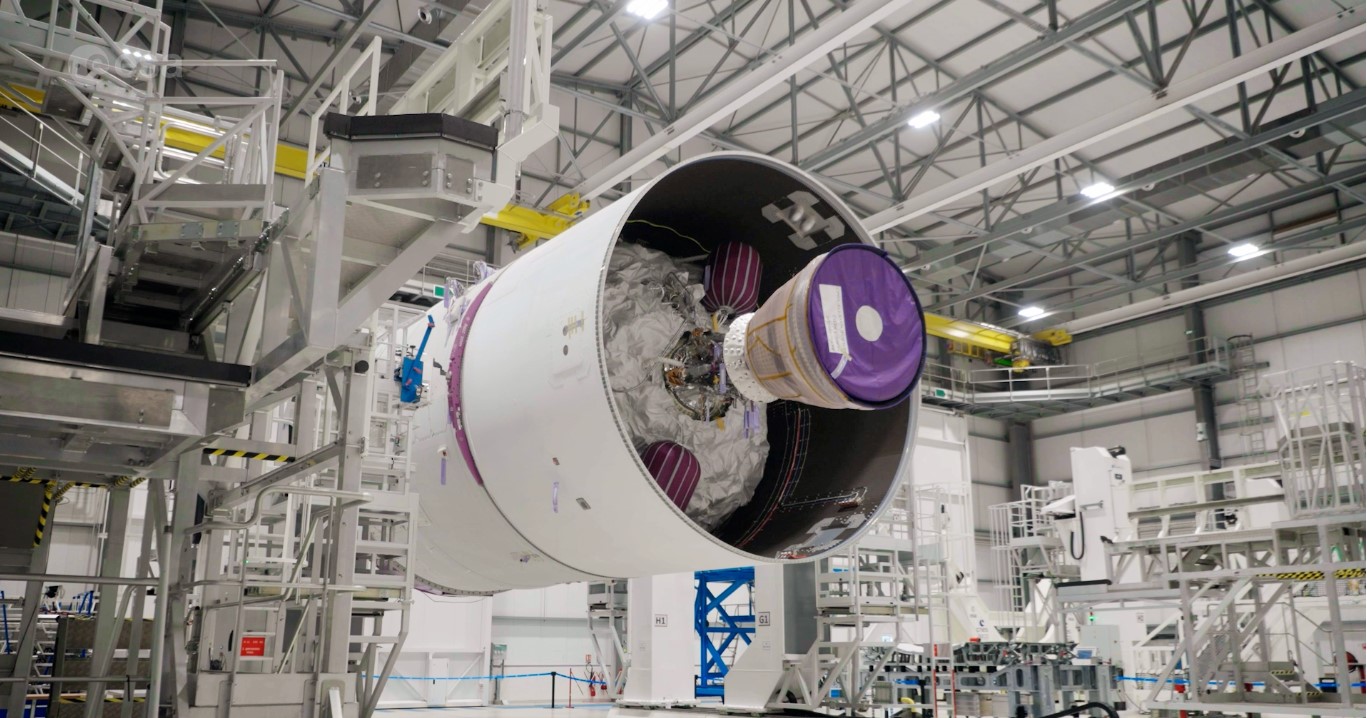The European Space Agency (ESA)’s next generation heavy lift rocket is just months away from its first flight, and its major components are now being assembled for launch at the Vehicle Assembly Building in Kourou, French Guiana.
The new rocket is Europe’s upgrade to the retired Ariane 5, which flew for the last time in 2023. With a large payload fairing and lift capacity, Ariane 6 will be able to carry seriously heavy satellites (or multiple smaller ones). The heavy lift capability of the Ariane 6 is achieved using Hydrolox engines on both the first and second stages, assisted by up to four solid rocket boosters, enabling it to bring up to 11,000kg to geostationary transfer orbit.
The Ariane 6’s upper stage features the capability to relight its engine multiple times, giving it plenty of flexibility in the types of missions it can carry out, and improving the precision of the orbits it can reach. That makes it useful for both interplanetary missions and for unique orbital requirements around Earth.

What it won’t be is reusable.
Ariane 6 is an expendable rocket, bringing critics to wonder if it can keep up with notable competitors pursuing reusability like SpaceX. But Ariane 6 has different capabilities and caters to different launch parameters than SpaceX, giving it a market share that the Falcon Heavy isn’t tuned for. Perhaps more importantly, independent access to space is a priority for Europe, making Ariane 6 a strategic imperative as much as a technological or competitive advancement. Still, Ariane 6 may not remain ESA’s workhorse rocket long-term – they are already investigating reusable alternatives that should come onto the scene in the 2030s.
The rocket stages themselves aren’t the only place where ESA can make eco-and-budget-friendly innovations, and some changes are happening now. The support and logistics infrastructure for the Ariane 6, for example, includes shipping the rocket stages aboard the Canopée, a wind-assisted hybrid cargo ship that can cut emissions by more than 20% – up to 30% depending on its speed – compared to a conventionally powered ship.

The Canopée delivered the first Ariane 6 to Kourou last month, arriving at port after a 10-day, 7,000km journey from mainland Europe in February.
The rocket now being prepared for flight within the vehicle assembly building will go vertical on the pad in the coming months.
Ariane 6’s first flight is set for no earlier than June 15. It will carry out a rideshare mission bringing multiple small spacecraft into orbit.
After that, the vehicle will have a steady launch cadence, with a series of flights scheduled for 2025 to carry upgraded satellites for Europe’s Galileo constellation (an independent GPS system). There are also plans to launch several deep space missions in the next few years, including ESA’s exoplanet hunting telescope PLATO, components of the Mars Sample Return infrastructure, and ESA’s Comet Interceptor mission.


“Ariane 6 is an expendable rocket, bringing critics to wonder if it can keep up with notable competitors pursuing reusability like SpaceX. But Ariane 6 has different capabilities and caters to different launch parameters than SpaceX, giving it a market share that the Falcon Heavy isn’t tuned for.”
Ariane 6 won’t compete with the partially reusable, for geostationary orbits underpowered Falcon Heavy though. Its fully reusable Starship competitor is already launching to space (though admittedly in “expendable mode” so far). It aims to cut Falcon 9/Heavy costs with a huge factor.
Starship will be able to refuel in low Earth orbit and reach geostationary orbits if needed, or perhaps cheaper use a transfer stage – it can launch 100 metric tons and the plan is to double that. And double it again if in expendable mode – 400 metric tons to orbit in one go. You can’t be cheaper and more capable than that right now.
When Starship reached space a European space engineer responded yesterday on X by claiming that Europe was 15 years after the technology front. He may have been correct, that could be two launcher generations back with the new shorter generation times.
“When Starship reached space” – when Starship reached orbit. IIRC both booster and ship transited the Karman line in its second flight attempt.